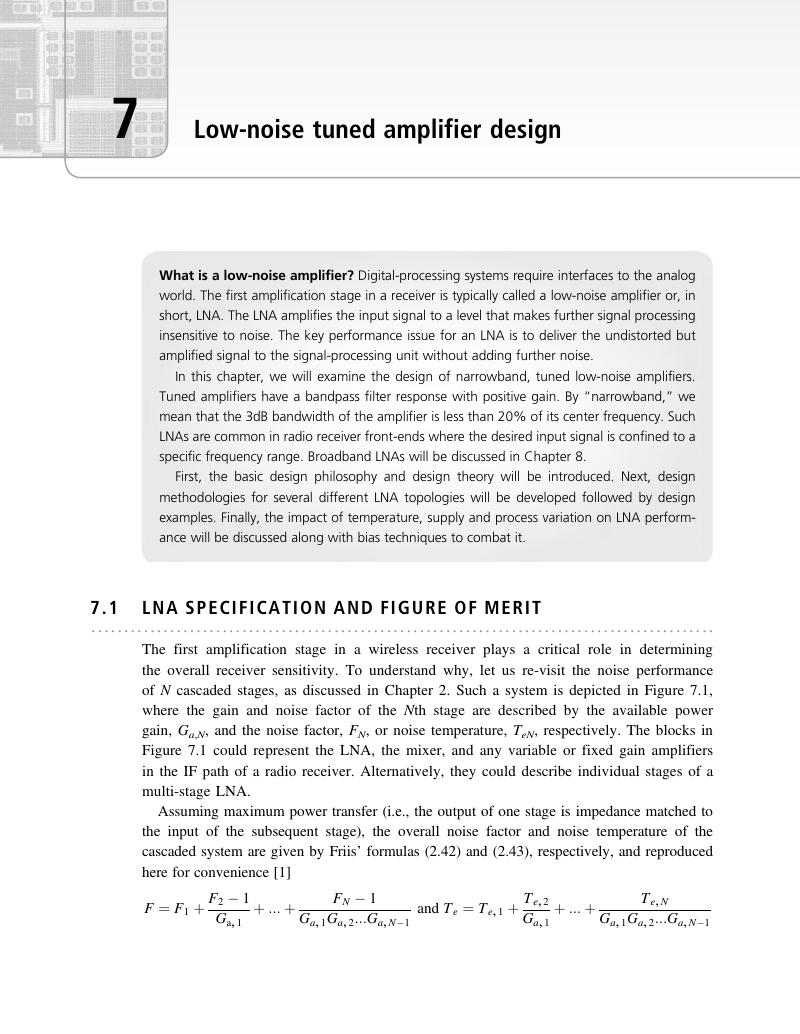Book contents
- Frontmatter
- Contents
- Preface
- 1 Introduction
- 2 High-frequency and high-data-rate communication systems
- 3 High-frequency linear noisy network analysis
- 4 High-frequency devices
- 5 Circuit analysis techniques for high-frequency integrated circuits
- 6 Tuned power amplifier design
- 7 Low-noise tuned amplifier design
- 8 Broadband low-noise and transimpedance amplifiers
- 9 Mixers, switches, modulators, and other control circuits
- 10 Design of voltage-controlled oscillators
- 11 High-speed digital logic
- 12 High-speed digital output drivers with waveshape control
- 13 SoC examples
- Appendix 1 Trigonometric identities
- Appendix 2 Baseband binary data formats and analysis
- Appendix 3 Linear matrix transformations
- Appendix 4 Fourier series
- Appendix 5 Exact noise analysis for a cascode amplifier with inductive degeneration
- Appendix 6 Noise analysis of the common-emitter amplifier with transformer feedback
- Appendix 7 Common-source amplifier with shunt–series transformer feedback
- Appendix 8 HiCUM level 0 model for a SiGe HBT
- Appendix 9 Technology parameters
- Appendix 10 Analytical study of oscillator phase noise
- Appendix 11 Physical constants
- Appendix 12 Letter frequency bands
- Index
- References
7 - Low-noise tuned amplifier design
Published online by Cambridge University Press: 05 March 2013
- Frontmatter
- Contents
- Preface
- 1 Introduction
- 2 High-frequency and high-data-rate communication systems
- 3 High-frequency linear noisy network analysis
- 4 High-frequency devices
- 5 Circuit analysis techniques for high-frequency integrated circuits
- 6 Tuned power amplifier design
- 7 Low-noise tuned amplifier design
- 8 Broadband low-noise and transimpedance amplifiers
- 9 Mixers, switches, modulators, and other control circuits
- 10 Design of voltage-controlled oscillators
- 11 High-speed digital logic
- 12 High-speed digital output drivers with waveshape control
- 13 SoC examples
- Appendix 1 Trigonometric identities
- Appendix 2 Baseband binary data formats and analysis
- Appendix 3 Linear matrix transformations
- Appendix 4 Fourier series
- Appendix 5 Exact noise analysis for a cascode amplifier with inductive degeneration
- Appendix 6 Noise analysis of the common-emitter amplifier with transformer feedback
- Appendix 7 Common-source amplifier with shunt–series transformer feedback
- Appendix 8 HiCUM level 0 model for a SiGe HBT
- Appendix 9 Technology parameters
- Appendix 10 Analytical study of oscillator phase noise
- Appendix 11 Physical constants
- Appendix 12 Letter frequency bands
- Index
- References
Summary

- Type
- Chapter
- Information
- High-Frequency Integrated Circuits , pp. 439 - 502Publisher: Cambridge University PressPrint publication year: 2013



